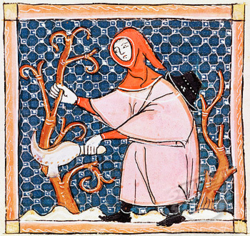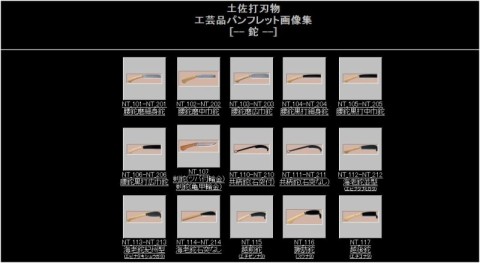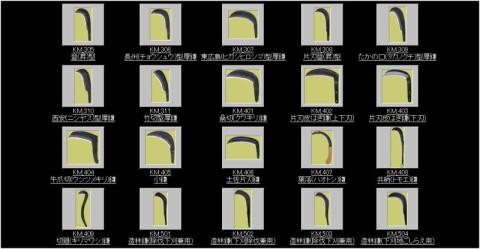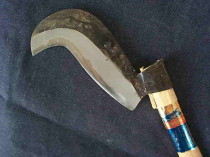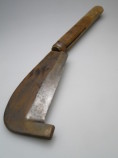Japanese nata and kama
There are many shapes of Japanese billhooks, but they fall into two basic types. Nata have a fairly straight cutting edge, with a single or double bevel. Some have a projecting nose, but this is rarely sharpened, They are usually sold fitted with a white oak handle, held in place with two rivets and an iron ferrule. Kama can be billhook or sickle shaped, but have a thicker blade for cutting wood or bamboo. The blade is sharpened to the end of the beak. They are often sold as a blade without an handle. Like the nata they have a projecting scale tang with two rivet holes - the user fitted handle may be short, like a nata, or longer like an English slasher or brushing hook.
Page 1 (of 3) of nata from the Tosahamono on-line catalogue.
